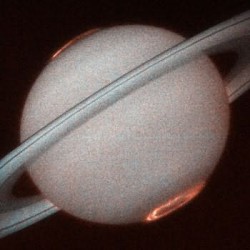This makes sense because most of the organic compounds that are
necessary for life are polar, such as glucose. Even some of the compounds that
are not polar have high molar masses. Due to their high molar mass, these
compounds have large London Dispersion Forces (LDF). Solubility of molecules depends
on their intermolecular forces (IMF). Solvents with high IMFs dissolve solutes
with high IMFs and vice versa; this is the “like dissolves like” rule. This why
water, a polar molecule, can dissolve all of the organic compounds that
organisms need to break down for food. What if organisms used compounds and solvents
with lower IMFs?
New research about Titan, Saturn’s moon, proposes this same
theory. Titan contains liquid and gaseous methane in its atmosphere and on
parts of its surface. Scientist proposed a theory stating that there is a possibility that organisms on Titan could use methane as their organic solvent instead of water. Since methane is nonpolar and has a low LDF, compounds that
are nonpolar and have low LDFs would be needed for the methane to be useful.
Acetylene is a compound that scientist believe could be used in place on
glucose if this theory were proven true. Since, this follows the “like
dissolves like” rule, this concept is quite plausible.











